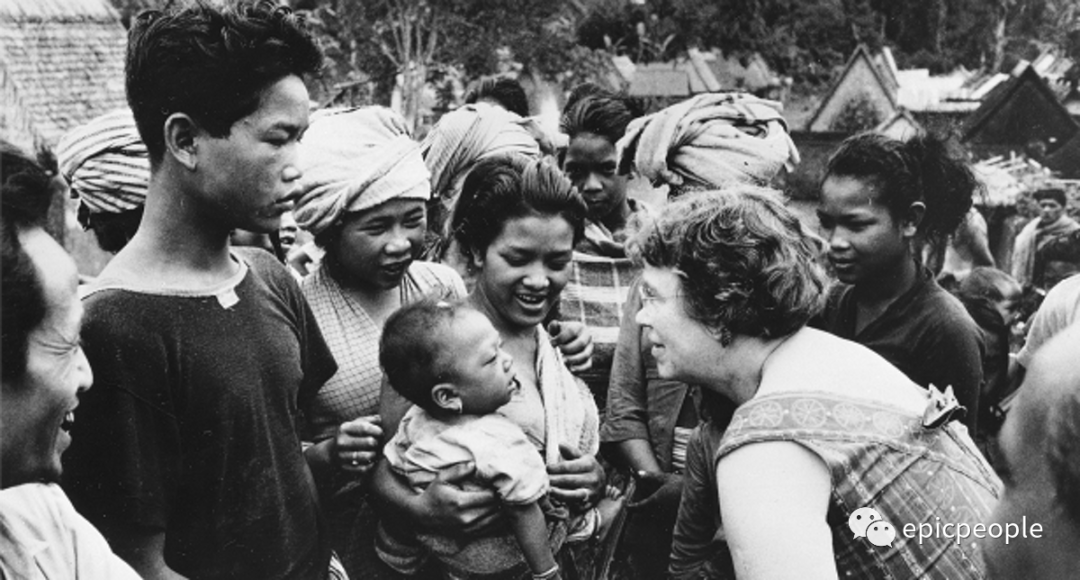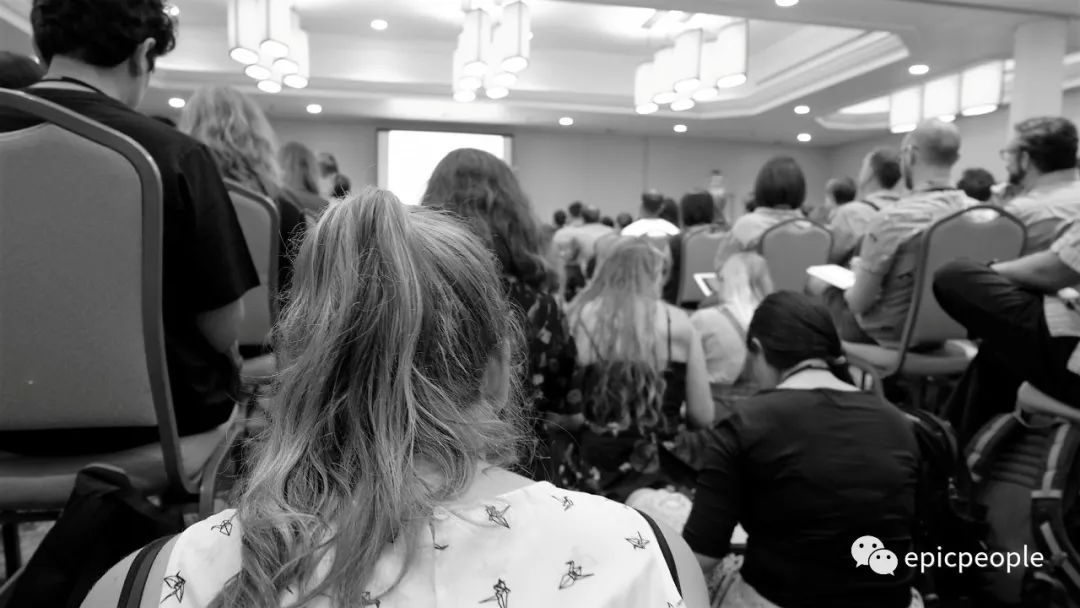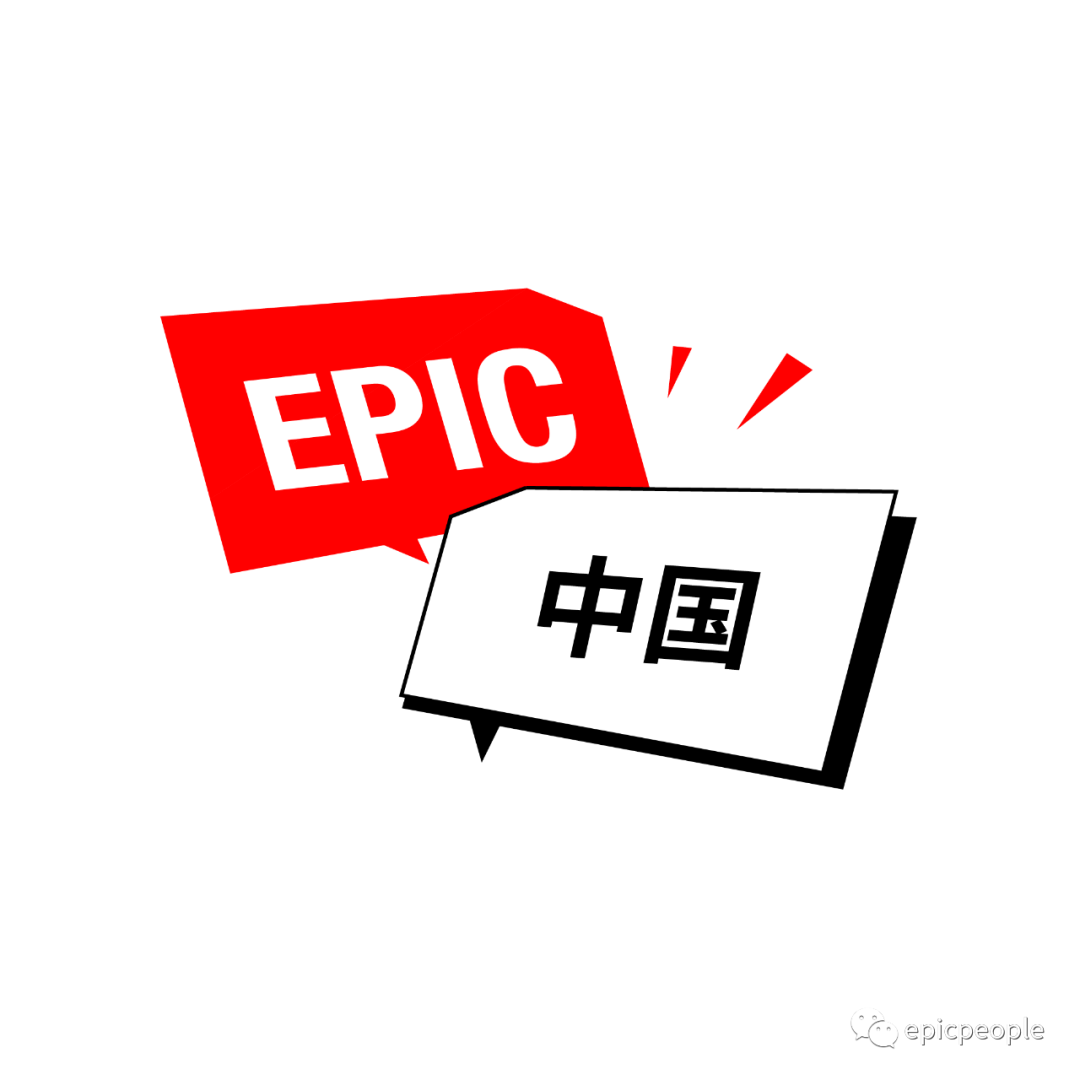EPIC中国|文字: 大猫 x 视觉: 小乔
没有人是一座孤岛, 在大海中独踞。 每个人都像一块小小的泥土, 连接成整个陆地。 作为人类的一员, 我们与万物共成长。
亲爱的人类,你好!
我们是EPIC中国。
也许这是你第一次听到我们的名字,也许你还没有完全发现我们与你之间丝丝缕缕的联系。所以,请允许我们用一点时间来介绍自己。

让我们短暂地回到公元前五世纪,从民族志的起源说起。
01 — 民族志与大腿骨
民族志(Ethnography)一词源自两个古希腊语词根,“ethnos”意即人群,“grapho”则是书写的意思[1]。民族志学或者民族志研究,是人类学和社会学中的一个重要分支。西方的“民族志”传统源自“历史学之父”希罗多德,在《历史》一书中,他依靠走访各地获得的大量素材,以希波战争为主线,串起了亚、非、欧三大洲各民族的风俗和传说,因此近代以来也被誉为“人类学之父” [2]。

希罗多德
时光顺流而下,我们来到了十九世纪六十年代的人类学课堂。
一位学生向玛格丽特·米德[3]提问:“在您看来,什么才是印证人类文明的第一个记号?” 米德回答道:“一截骨折过的人类大腿骨。”
陶器,狩猎工具,祭祀用品,这其中任何一个答案都似乎比“大腿骨”都更令人信服。

Femur bone - 大腿骨解剖图 来源:Google
米德继续为学生解释:“在没有现代医疗的远古时代,大腿骨骨折痊愈需要约六周的时间。在具有一万五千年历史的考古勘探点,我们找到的这段遗骸曾经受伤并痊愈过。大腿骨又名股骨、髀骨、楗,是人体最长的管状骨。上端以股骨头与髋臼构成髋关节,下端与膑骨、胫骨上端构成膝关节,支撑全身体重。在动物王国中,断腿就意味着死亡。无法觅食,无法逃跑,重伤的你只能沦落为林间野兽的盘中餐。没有谁能凭一己之力存活到痊愈的那天。骨折并愈合的人类腿骨化石证明:在漫长的痊愈过程中,伤者不仅没有被遗弃,还曾被同伴悉心照料过。自然界弱肉强食的丛林法则不再是唯一的信仰。‘助人于危难之间才是人类文明的萌芽’,米德总结道,永远不要怀疑:改变世界,只需要一小群意志坚定又有思想公民。毕竟,这就是人类之所以为人的一切[4]。”

玛格丽特·米德(1901-1978),美国现代文化人类学上举足轻重的学者之一[5]
我们无法亲身回到一万五千年历史前,但根据历史留下的线索,我们却可以通过严格、自洽的逻辑推演形成合理的理论。
这个溯因推理的过程应用在人类学中就是民族志研究。
民族志研究,并不限于某种特定的研究手法,而是一套聚焦于人类社会属性的研究理念。现代民族志研究着重于理解人类是如何作为社会性动物而存在于社会、文化、政治以及科技这四大体系之中的。
02 — 什么是EPIC?
EPIC的全称是 Ethnographic Praxis in Industry Conference,民族志研究业界实践大会。顾名思义,EPIC 是以会议的形式诞生的。2005年至今,EPIC已在四个大洲成功举办。从一年仅一度的行业会议起步,如今的 EPIC 活跃在世界各地,成为民族志研究从业者互相了解、联结、学习、成长,共同扩大自身影响力的国际社区。

EPIC 成员生活在五湖四海,EPIC成员的聚会终年无休 / SAM, EPIC 2019
EPIC 社区是由志愿者运作、会员和赞助方支持的非营利机构。我们的社区由多元化的的组织和产业所构成——科技公司、产品与服务公司、咨询机构、大学与设计学院、政府与其他非营利组织以及科研机构。
EPIC成员受训于截然不同的领域和专业,但一种不谋而合的工作追求让我们聚集在一起:通过民族志研究理解人类行为,确保创新、战略、工作进程和最终产品均深植于对人与社会、文化、科技体系关系的理解之上。
作为民族志从业者,我们手握为沉寂者发声的机会。然而,我们所代表的不仅仅是呼声本身。我们有能力通过分析、架构和理解去推进让人们更加自主自立的举措——为了我们所在公司的利益相关者,更为了那些在实地调查中与我们共度时光的人们。 ——Es Braziel, 用户体验研究员
03 — 什么是EPIC中国?
如你所想,EPIC中国就是EPIC国际组织在中国的分支。我们是一群充满热情、秉承EPIC理念的中文志愿者。我们的愿望是把EPIC社区的研究精神与丰富的资源带给中文用户,并与中文成员携手共建具有中文风格的民族志研究分享中心。

EPIC中国,因为有你 仅有志愿者而没有参与者的EPIC中国如同空中楼阁,徒有美好愿望却无从实现。你的关注和参与才会让这一切成为可能。你的关注和参与才会让这一切成为可能。
关于你
- 直立行走的人类 :)
- 对自己、人类迷惑行为和社会关系充满好奇心
- 对学术界或者业界的定性定量研究有了解的兴趣
- 期待与志同道合的伙伴分享心得体会
如果你已经是民族志研究的从业者,那很棒;但参与EPIC中国,并不需要专业作为起点。正如人类学家项飚[6]在访谈中所述:“把自己作为方法的重点词不是‘自己’,而是‘方法’,因为它总的意思就是,‘我如何更好地去认识世界’。认识世界需要一定的方法,你怎样去比较连贯地、系统地叙述,形成一定的理解、一定的意义。”
EPIC中国希望可以陪你一起认识世界。
敬请期待
在起步阶段,我们为你设想了四个了解民族志的通道 ——
EPIC全球分享精选 民族志研究能为瞬息万变的市场提供什么价值?
EPIC大会动向和实时报道 2020重磅来袭:EPIC 2020 Scale,相约10月19-28日 (https://2020.epicpeople.org/)
大咖沙龙 民族志的日与夜 The Day and Night of Ethnography
嘉宾: Ken Anderson 英特尔研究部门人类学家,首席研究员 EPIC全球社区联合创始人 辛向阳 XXY Innovation设计思维与战略咨询创始人 教授、博士生导师,原江南大学设计学院院长
民族志者的日常播客 暂时保密!
文字: 大猫 烧厨房的设计研究经理,人类形态的猫科动物 [LinkedIn]
视觉: 小乔 游荡于人间的趋势观察者 [LinkedIn]
Reference [1] "Technical definition of ethnography", American Ethnography [2] John L. Jackson JR. "Ethnography is, Ethnography Ain’t.", Cultural Anthropology Vol. 27, No. 3, "Writing Culture" at 25 (AUGUST 2012), pp. 480-497 (18 pages), DOI: 10.2307/23252408). [3] Ira Byock, The Best Care Possible: A Physician’s Quest to Transform Care Through the End of Life (Avery, 2012). [4] How A 15,000-Year-Old Human Bone Could Help You Through The Coronacrisis, https://www.forbes.com/sites/remyblumenfeld/2020/03/21/how-a-15000-year-old-human-bone-could-help-you-through-the--coronavirus/#321717e037e9 [5] 玛格丽特·米德(1901-1978),美国现代文化人类学上举足轻重的学者之一https://en.wikipedia.org/wiki/Margaret_Mead [6] 项飚、陈嘉映、许楠,经验与互联网 | 陈嘉映与向飙对话实录(上),单读新书圆桌论坛 [7] EPIC People official website. https://www.epicpeople.org/
[FOR EPIC TEXT ONLY] Allow us to introduce ourselves
EPIC China | Ya Gao (editor), Jing Qiao (visual design), Aona Yang (translation)
Dear humans, welcome!
We are Epic China.
Maybe this is your first time to hear our name, or maybe you don’t have a clue of what our connections are. So allow us to introduce ourselves to you.
01 — The Tale of a Femur Bone
The word “ethnography” was originated from Greek (ἔθνος ethnos "folk, people, nation" and γράφω grapho "I write"). It refers to a branch of anthropology and the systematic study of individual cultures.
The practice of ethnography research in the Western world can be traced back to ancient Greece, where Herodotus, an ancient greek historian, also referred to as “The Father of History”, documented a detailed record of the inquiries he made on the Greco-Persian Wars in his book, The Histories, through visiting various pockets of the world. Today, ethnography heavily on participant observation—on the researcher participating in the setting or with the people being studied, at least in some marginal role, and seeking to document, in detail, patterns of social interaction and
In the 1960s, a group of students asked anthropologist Margaret Mead what she considered to be the first sign of civilization in a culture, expecting the answer to be clay pots, tools for hunting, grinding-stones, or religious artifacts. But instead, they got the answer that the first evidence of civilization was a 15,000 years old fractured femur found in an archaeological site.
A femur is the longest bone in the body, linking hip to knee. In societies without the benefits of modern medicine, it takes about six weeks of rest for a fractured femur to heal.
Mead explained, if you break your leg in the animal kingdom you die. Because that means you will not be able to run from danger, nor hunt for food to survive. Thus a healed femur indicates that another person has taken time to stay with the injured, who has helped bound up the wound, carried the person to safety and has tended them through recovery. “Helping someone else through difficulty is where civilization starts,” Margaret Mead said, “Never doubt that a small group of thoughtful, committed citizens can change the world; For, indeed, that's all who ever have.”
So how did we end up with this conclusion? We certainly can’t go back in time and observe. But we absolutely can ratiocinate and demonstrate the reasoning behind these manifestations through traces that history left us. This process of tracing and evidence seeking is referred to as Ethnography. So now you know, the word “ethnography” doesn’t refer to any one research method in particular, but it categorizes a systematic way of understanding how us humans, as social beings, are embedded in social, cultural, political and technological ecosystems.
02 — So who is EPIC and what is EPIC Community?
EPIC stands for Ethnographic Praxis in Industry Conference. Began in 2005 as an annual conference, the EPIC conference has been successfully held on four continents. Today we learn, connect, and develop as professionals all year, amplifying our impact together. EPIC people come together year-round: participating in online events, sharing job opportunities, connecting to ethnographic agencies and services, and writing on our blog Perspectives.
EPIC is also a nonprofit organization driven by volunteers and supported by members and sponsors. Our community hails from all kinds of organizations and industries—technology corporations, product and service companies, a range of consultancies, universities and design schools, government and NGOs, and research institutes. Through paper presentations, case studies, workshops, and many other forms of engagement, we develop robust practices and conceptual leadership to inform innovation and strategy in a changing world.
“As ethnographers, we have the opportunity to highlight voices that are often silent. But not just the voices themselves—we’re able to analyze and create structure and ways of understanding and moving forward that are more empowering, not only for corporate stakeholders but for the folks that we’re actually in the field with.” —ES BRAZIEL, UX RESEARCHER
03 — Alright, so who is EPIC China then?
EPIC China is the newly formed China branch of our international EPIC community. We are a group of passionate, Chinese speaking volunteers, who thrive to bring the message, spirit and abundant resources of EPIC international community to Chinese ethnographers. We aim to together form the China central hub for all things ethnography.
So who are YOU?
You are: A human being; Always curious about our beings, humans fascinating behaviors and complex social dynamics; Have interests in qualitative or quantitative research practices in academia or the industry; Have dreamed of one day to travel around the globe and explore the glory or fickleness of humanity Have hoped to join a community full of people just like YOU.
If you are already an ethnography practitioner, great and WELCOME. However, joining EPIC China doesn’t require you to be an ethnographer yourself.
Like what Biao Xiang, an anthropologist, said in a recent interview: “...(the answer to the question) ‘how can I better understand the world’ - it requires the use of ‘Methods’. ‘Methods’ is what enables you to consecutively, systematically document, and cultivate your own form of understanding and meaning.”
So on your way of getting to know the world better, we hope EPIC China can offer you sprinkles of inspiration and equip you with the right knowledge of Methods.
EPIC China and YOU At the beginning of our journey, we would love to introduce you to ethnography through these 4 channels: Translated EPIC past proceedings and blog posts EPIC conference live coverage and discussion An in-depth discussion with Ethnographers (EPIC China Salon) Monthly podcast: a day in the life of ethnography practitioners
We’d love to hear from your feedback and suggestions, so that we can stay on top of what can benefit YOU the most.
So nice to meet you all. Let us wrap this up with the poem by John Donn:
No Man Is An Island ——John Donn [1] ”No man is an island entire of itself; every man is a piece of the continent, a part of the main; if a clod be washed away by the sea, Europe is the less, as well as if a promontory were, as well as any manor of thy friends or of thine own were; any man's death diminishes me, because I am involved in mankind. And therefore never send to know for whom the bell tolls; it tolls for thee.
Reference [1] "Technical definition of ethnography", American Ethnography [2] John L. Jackson JR. "Ethnography is, Ethnography Ain’t.", Cultural Anthropology Vol. 27, No. 3, "Writing Culture" at 25 (AUGUST 2012), pp. 480-497 (18 pages), DOI: 10.2307/23252408). [3] Margaret Mead(1901-1978), American Cultural Anthropologist https://en.wikipedia.org/wiki/Margaret_Mead [4] Ira Byock, The Best Care Possible: A Physician’s Quest to Transform Care Through the End of Life (Avery, 2012). [5] How A 15,000-Year-Old Human Bone Could Help You Through The Coronacrisis, https://www.forbes.com/sites/remyblumenfeld/2020/03/21/how-a-15000-year-old-human-bone-could-help-you-through-the--coronavirus/#321717e037e9 [6] Biao Xiang, Jiaying Chen, Nan Xu, Experience and the Internet: an Interview.
